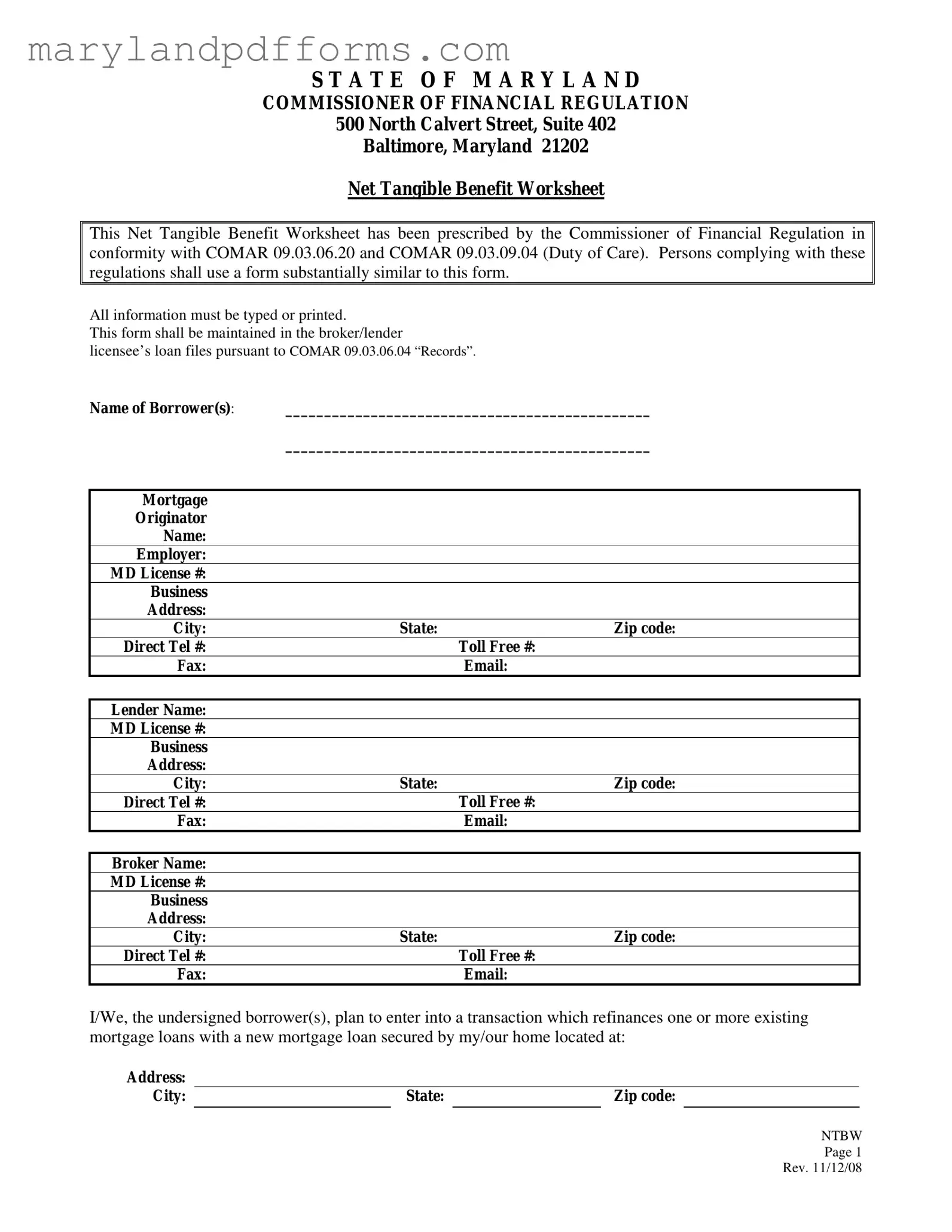Blank Maryland Ntbw Template
The Maryland Net Tangible Benefit Worksheet is a form designed to help borrowers understand the advantages of refinancing their mortgage loans. This worksheet, mandated by the Commissioner of Financial Regulation, ensures that borrowers evaluate the tangible benefits of a new loan compared to their existing loans. By completing this form, borrowers can make informed decisions that align with their financial goals.
Ready to assess your refinancing options? Fill out the form by clicking the button below.
Fill Out Maryland Ntbw Now
